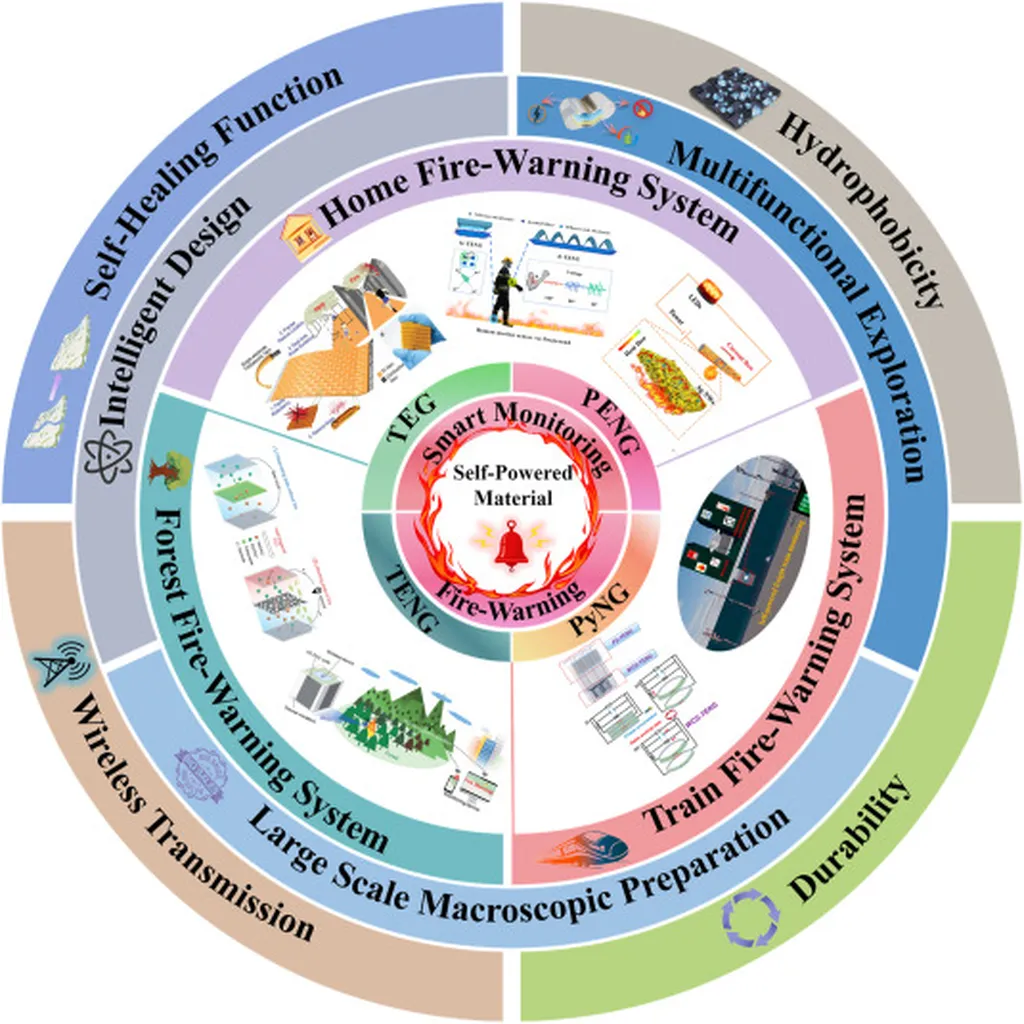In the heart of China’s bustling construction industry, a breakthrough in fire safety technology is emerging from the labs of Wuhan University of Technology. Zhilin Shen, a leading researcher at the School of Safety Science and Emergency Management, is spearheading a project that could revolutionize how we protect high-rise buildings from fires. The focus? Self-powered smart fire-alarm materials, a innovation that promises to enhance safety and energy efficiency in urban landscapes.
As cities around the world continue to grow vertically, the demand for advanced fire safety systems has never been greater. Traditional fire-alarm systems, while effective, have a critical weakness: they rely on external power sources. In the event of a fire that causes a power outage, these systems can fail, leaving buildings vulnerable. Shen and his team are tackling this challenge head-on with nanogenerators (NGs), a cutting-edge technology that converts ambient micro-energy into electrical power.
“Nanogenerators offer a stable, self-powered solution that can operate independently of external power sources,” Shen explains. “This stability, combined with their structural diversity, makes them ideal for integration into fire-alarm systems.” The potential commercial impacts for the energy sector are substantial. By reducing reliance on conventional electricity, self-powered fire-alarm systems could contribute to significant energy savings and promote the use of renewable energy sources.
The research, published in the Journal of Safety and Sustainability (translated as “安全与可持续性杂志”), introduces the concept of smart firefighting. This innovative approach integrates fire sensors with Internet of Things (IoT) technology, creating intelligent fire monitoring systems. “Imagine a building where fire alarms not only detect fires but also communicate with each other and with emergency services in real-time,” Shen envisions. “This level of intelligence could drastically improve response times and save lives.”
The implications of this research extend beyond immediate fire safety benefits. By advancing the use of self-powered technologies, the construction and energy sectors could see a shift towards more sustainable and resilient infrastructure. “This is not just about improving fire safety; it’s about rethinking how we power our buildings and utilize energy,” Shen notes.
As urbanization accelerates, the need for such advancements becomes increasingly urgent. Shen’s work at Wuhan University of Technology is paving the way for a future where buildings are not only taller and more aesthetically pleasing but also safer and more energy-efficient. The journey towards this future is just beginning, but the potential is immense.

